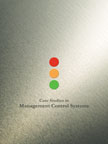Operations Management
 |
Details
Textbook:
Pages : 329;
Paperback;
210 X 275 mm approx.
Workbook:
Pages :
239; Paperback;
210 X 275 mm approx, Sample Applied Theory Questions
Courier charges extra
Pricing
Textbook Price: Rs. 900;
Workbook Price: Rs. 700;
Available only in INDIA
Detail Table of Contents
Click below to view
HTML
Materials Requirement Planning : Chapter 13
SUMMARY: Dependent demand inventory requirements are based on external market demand. Inventory planning and scheduling are important aspects of any business process. They ensure the availability of requisite materials whenever and wherever they are needed. In large organizations, the amount of material that flows through a production system is enormous. Therefore, to track all these components, which include raw material, WIP, finished products and sub parts, a comprehensive system is required. This is where the MRP system comes into picture. It helps an organization plan dependent demand inventory, schedule replenishment orders, generate a production schedule, etc. MRP assists in improving customer service, minimizing inventory investments, improving operating efficiency and responding quickly to the market demand. |
|
Key elements of an MRP system are inputs (master production schedule, bills of material and inventory records file), processing (explosion, netting, offsetting), and output (primary reports and secondary reports).
MRP decisions are based on lead-time, lot sizing rules (economic order quantity, lot for lot, least total costs, least unit costs), safety stock, etc.
As all the operations decisions are interrelated there was a requirement of a more comprehensive system, which included feedbacks from the other functional domains in an organization like purchasing, marketing, finance, etc. MRP II is such a system, which coordinates the allocation of various manufacturing resources. Through integration of the different aspects of a plan, MRP II can forecast customer requirements, allocate necessary resources and ensure the timely delivery of products. MRP II assists an organization in handling out-of-order situations without disrupting the normal flow of product to customers.



